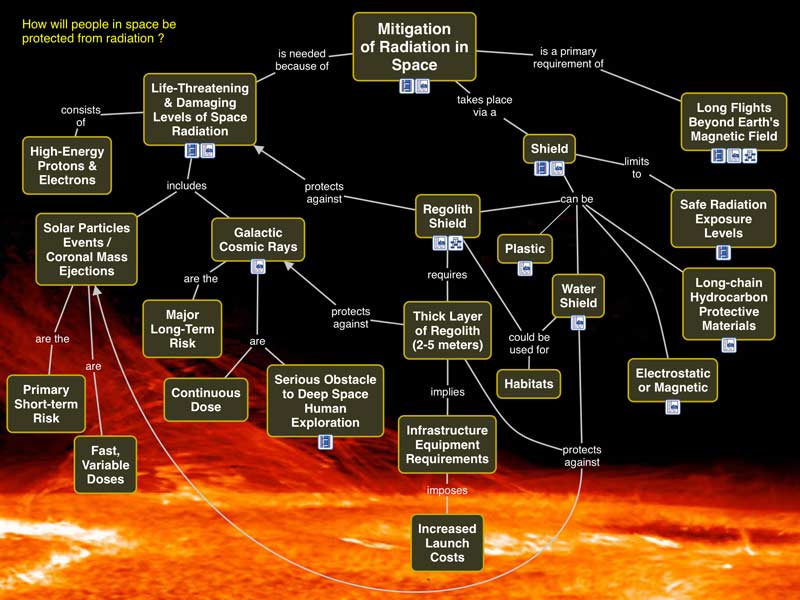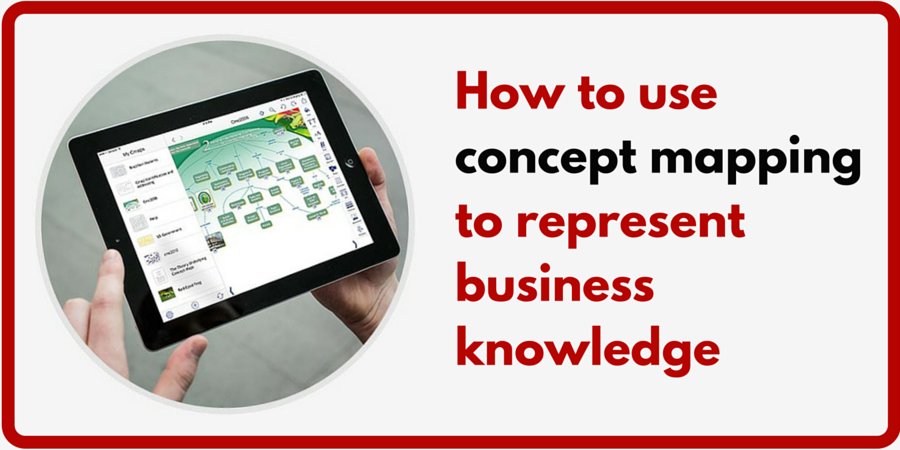Concept mapping is well-known as a tool for expressing knowledge. But how is it used in business? I recently spoke with Alberto Cañas from IHMC, one of the leading developers of concept mapping software, to learn more.
Frey: Why is concept mapping such a powerful tool for representing knowledge?
Cañas: First, the fact that you can express more complex relationships between ideas than you can in a mind map is important. In the world of knowledge, concepts can have multiple “parents” and “children.” Concept maps enable you to express that visually.
The other thing that makes concept mapping truly unique is its prepositional structure. In other words, each connector line between ideas can contain one or more words, which add context to those relationships. They tell anyone who is reading the concept map exactly what the nature of the relationship is between the two topics. That makes concept maps self-explanatory, in a sense. And that, in turn, enhances shared comprehension and understanding, which is very important in business.
As you know, mind maps are very dependent upon the ability of the map creator. Most of them are not self-explanatory. Anyone reading a mind map can see how the topics and subtopics are arranged, but they’re missing the context – the thinking that the map author used to create that structure. Concept mapping makes those relationships much more explicit.
Frey: I’ve heard that it takes longer to craft a concept map than it does a mind map or a diagram. Why is that?
Cañas: Because you’re mapping not only topics but you’re trying to visually describe the relationships between them, an excellent concept map is hard to create. You really have to put a lot of thought into how best to convey the knowledge you want to include in a map, and how to express the relationships between the elements that make it up.
Concept mapping for business knowledge management
Frey: How do businesses use concept mapping software, in addition to knowledge representation?
Cañas: As you mentioned, capturing knowledge, especially from a subject matter expert, is a common use. It can also be used to describe the “whys” behind a business process. A flow chart lays out the “how,” but a concept map provides a deeper understanding of the thinking behind it.
 Consultants sometimes use concept maps with their clients to map out the tasks that need to be done. Other teams use it to get a clearer picture of their organization’s unique competitive advantage. Government intelligence agencies use it to capture a complete knowledge map of what is known about a specific issue or crisis.
Consultants sometimes use concept maps with their clients to map out the tasks that need to be done. Other teams use it to get a clearer picture of their organization’s unique competitive advantage. Government intelligence agencies use it to capture a complete knowledge map of what is known about a specific issue or crisis.
NASA used it to create an iPad app that does a very rich, interactive job of explaining the thinking behind its Asteriod Redirect Mission. ARM will be the first-ever robotic mission to visit a large near-Earth asteroid, collect a multi-ton boulder from its surface, and redirect it into a stable orbit around the moon. Once it’s there, astronauts will explore it and return with samples in the 2020s. The concept maps it contains provide a navigation tool through thousands of videos, images, web pages and other concept maps.
Related article: Concept maps vs. mind maps


Leave a Reply